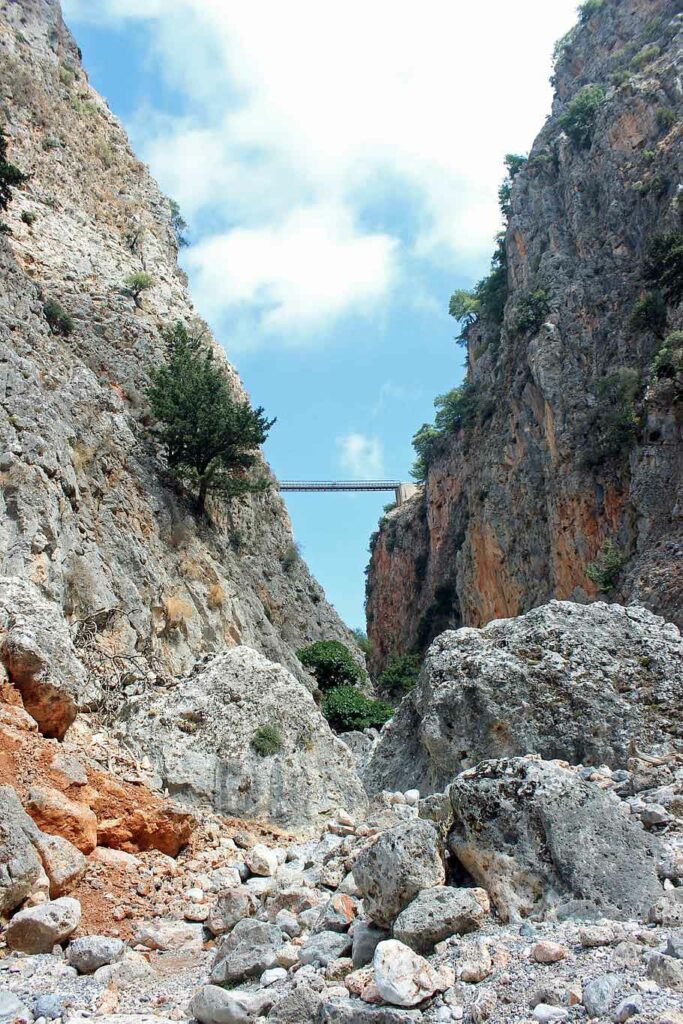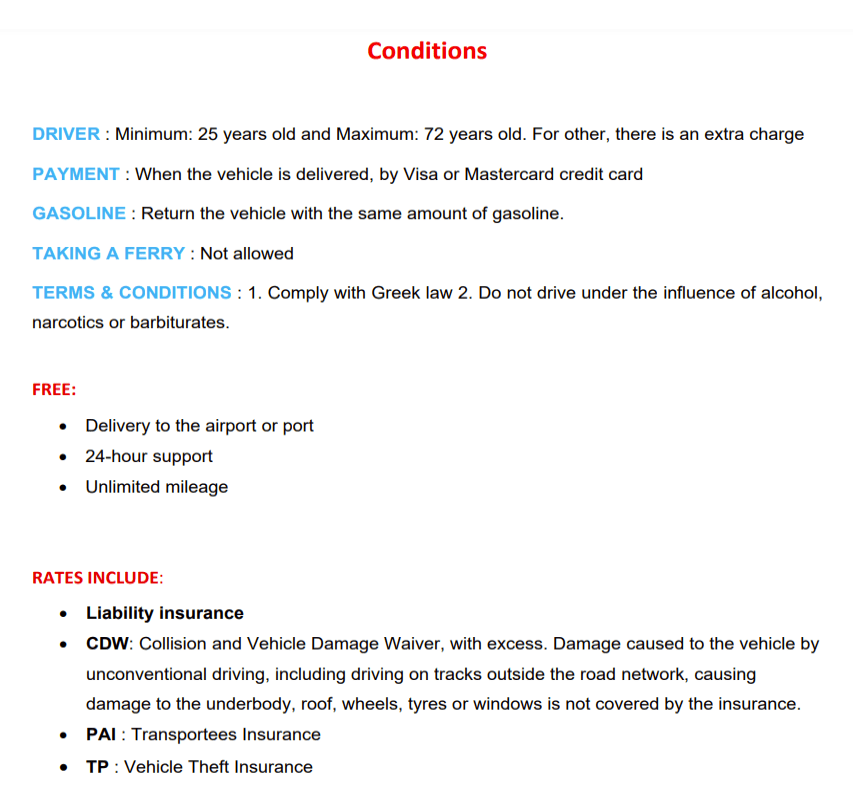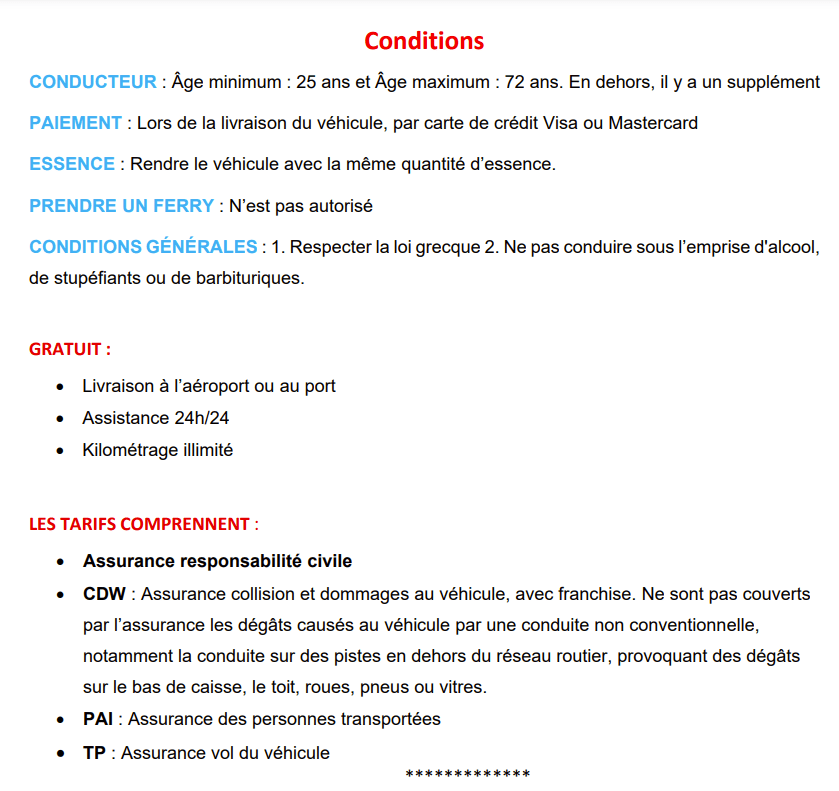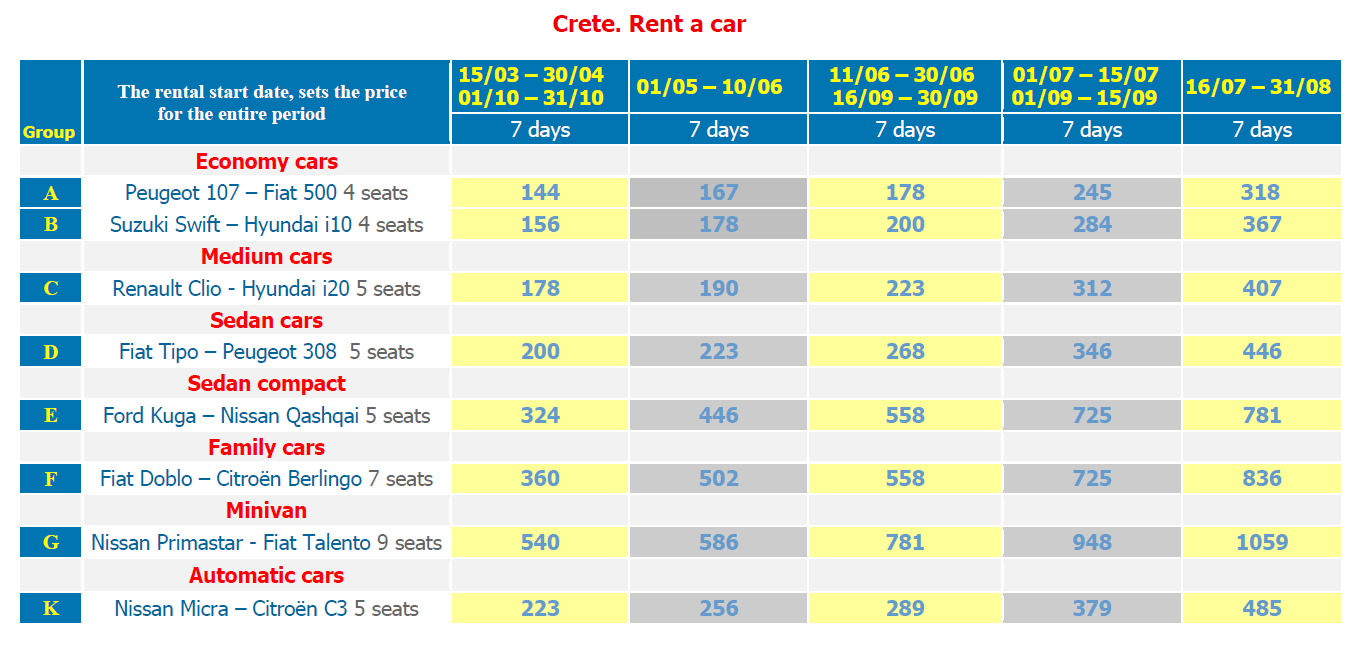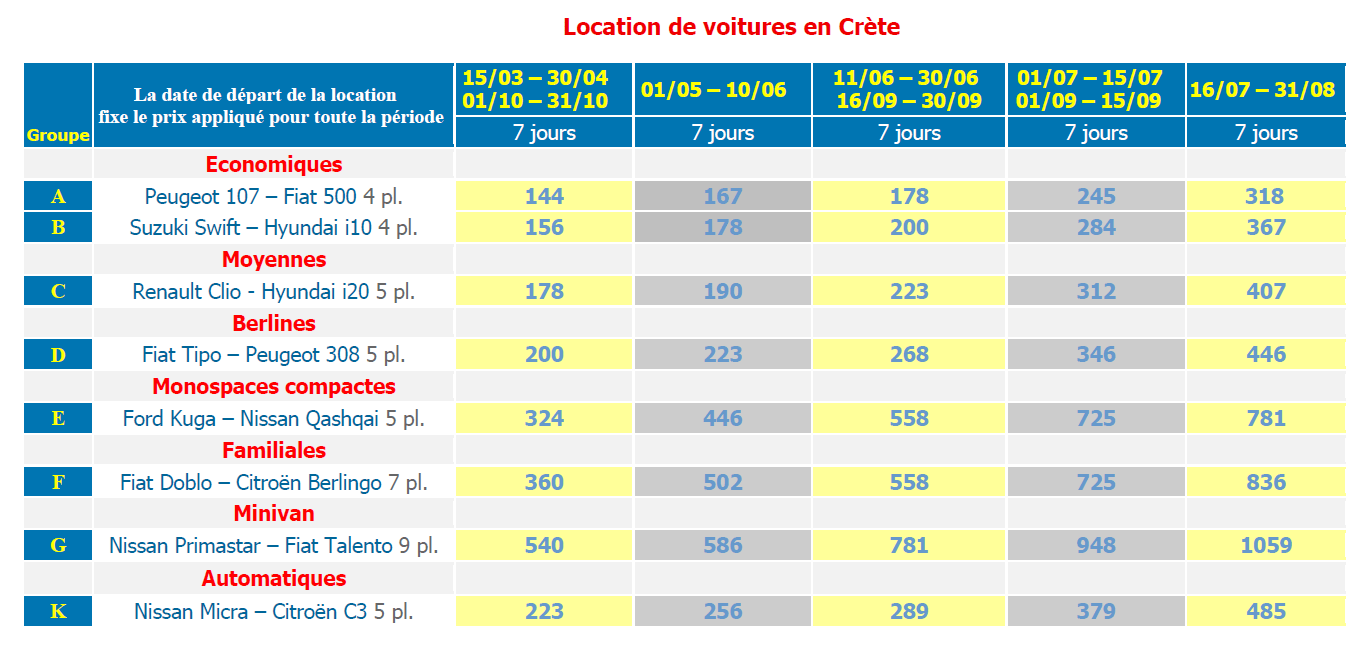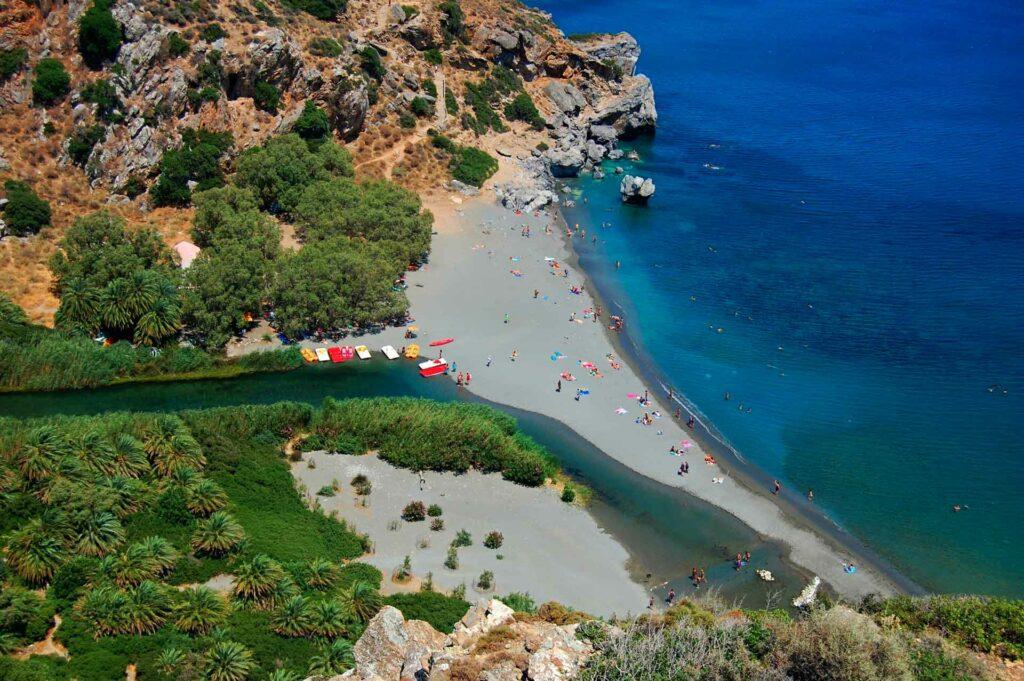Home » DISCOVERY » Crete and Greece. Useful information » visit Crete
Crete and Greece
What to see and do in Crete
It takes 5-6 hours to cover the island from east to west. So you can't make a round trip in a day to visit a remote place. So if you're going for a week, you'll need to choose a place to stay that will allow you to cover half the island in a day. On the other hand, if you have two weeks, you can plan one week in the east and the second in the west.
- The town of Chania, or Hania
- The Falasarna site and beach
- Balos Lagoon and Gramvousa Islands
- The fishing village of Loutro
- The museum and site of Knossos
- The town of Rethymnon
- Samaria gorge
- Agios Nikolaos, Vaï ...
The editor's tips
If you go to Crete in high season, during the months of July and August, book your flight several months in advance, otherwise you will not be able to choose the dates of your flight and find an accommodation that exactly meets your tastes. It should be added that if you have the soul of a backpacker, you can even in high season find a decent accommodation on site. The occupancy rate, even in July and August, never reaches the ceiling.
If you pass by Heraklion, visit its archaeological museum and the nearby site of Knossos, preferably in a group with a guide to better understand this illustrious Minoan civilization. As far as the duration of your stay is concerned, the ideal would be to spend two weeks there, one in the east and the other in the west. Otherwise, in one week you will have to make a choice between the sites to visit. (see our page "guided tour"). If I had to choose among my favorite places, I would have mentioned; Loutro, Kato Zakros, Chania, Samaria, Rethymnon...
DON'T MISS (see « guided tour ", through the map of Crete)
* Heraklion. Administrative capital of Crete, and fifth city of Greece by population, Heraklion is a city without charm in contrast to Rethymnon and especially to Chania. Its airport, " Nikos Kazantzakis" Heraklion, located in the center of the island, is a hub of local tourism. Of the 15 million tourists who arrive in Greece by air alone, 5 million land in Heraklion. A must see is the brand new Archaeological museum of Heraklion, which presents a breathtaking collection of Minoan art.
* Knossos (Or Cnossos): In 1900, the British archaeologist Sir Arthur Evans, highlighted the ruins of the Minoan palaceKnossos, a prodigious palace, of a brilliant civilization that shone between 2800 and 1450 B.C. It evokes the myths of King Minos, the labyrinth, the Minotaur, Daedalus, Icarus ... Preferably, visit the site of Knossos early in the morning or late afternoon, especially during the months of July and August, because of the heat. Join a group with a guide, it is not expensive and the trip back in time will be guaranteed, unless you are already a connoisseur of the Minoan civilization... ( Palace of Knossos)
* Lassithi plateau
At an altitude of more than 800 m, the Lassithi plateau, embedded in the mountains, was once famous for its 10,000 windmills that irrigated crops and provided water. Today, with the help of progress, they have been replaced by motorized pumps. Nevertheless, the plateau still offers peaceful and bucolic scenes of daily life. The Trapéza cave bears witness to traces of occupation dating back to 1850 BC. To the south of the plateau, the village of Psichro, the starting point for excursions to the famous cave where, according to Greek mythology, Zeus was born.
* Kato Zakros
The most important Minoan site of Eastern Crete. In 1961, an impressive palace was discovered which is surpassed in size only by that of Knossos. 6 500m² and about 300 rooms distributed on two floors. It is also a small corner of paradise with its bay ( Zakros Bay), its banana trees, its beach and its taverns. Nice hike to do in the gorge that connects Ano Zakros to Kato Zakros (about 1h30 walk, marked and signposted). This path is called " Valley of the Dead", The name refers to the pre-Minoan tombs (2,600 - 2,000 BC) dug into the rock walls. A visit to Xerokambos is worthwhile, as you follow a little-used road through beautiful landscapes, wild gorges and coves to the beach ofAmbelos, below Xerokampos, among the most beautiful in Crete. (see our page about Vai, Zakros, Palekastro)
* Chania (or Hania):
Capital of Crete until 1972, the city is the most charming of the island. Even if the bombardments of the second world war made big damages, the Ottoman and Venetian vestiges, restored slowly but with taste, the harbor of Chania, its charming streets, its restaurants and handicraft stores, its covered market with oriental smells, and its beautiful maritime, archaeological, historical and eco-museum, make Chania a city that never leaves you indifferent. If we add that the city can be the starting point of many tours and hikes, especially those of Samaria and Aradena, we can say that one week is not too much to discover this beautiful county. ( see map of Chania region)
* Samaria gorge
a classic of its kind, a bit overused now, but almost unavoidable, in the gorges among the longest in Europe (16km) and in the opinion of the Cretan who writes these lines, the most beautiful... From 4 to 8 hours of walking, according to the chosen or imposed rhythm, this hike is within the reach of everyone provided that you are in good physical condition and have a sure foot. Following the river bed, the Samaria gorge leads to Agia Roumeli, a small and friendly coastal village with cafes and restaurants overlooking the sea and a beautiful sandy beach. It is a hike that you will never forget ( hiking in the Samaria Gorge).
* Loutro
Exceptional natural site, charming village, peaceful, without cars, and accessible either on foot, for the hikers, from, in particular, Aradena or Hora Sfakion, or by the boat which makes the connection (every hour in high season) between Paleochora - Sougia - Agia Roumeli - Loutro - Hora Sfakion. Many taverns and rooms for rent. For the loners and the hikers, Loutro is a really dreamy place without any exaggeration! (see our page about village of Loutro in Crete)
* The beaches
In Crete, the nature, the mountains and the sea are very beautiful, but you should not expect to find everywhere fine sandy beaches like in Phuket in Thailand. Mostly you will have pebbles. If you are addicted to these fine sandy beaches, here are a few. In the west of the island, Falassarna, Elafonissi, Balos. South of Rethymnon, Frangokasstello, Preveli. In the east of the island, the beach of Vai, surrounded by a forest of palm trees. Nice, but in July and August it is very crowded ( beaches in Crete)
(Editor: Nikos Papadogeorgakis / Degeorges Nicolas)
Rent a car in Greece: Crete (Heraklion, Chania, Rethymnon, Agios Nikolaos) – Athens – Rhodes – Corfu – Mykonos – Santorini – Thessaloniki – Preveza/Aktion/Lefkada – Patras/Araxos – Kalamata – Paros – Syros – Kos – Naxos – Lesbos – Thassos – Zakynthos/Zante

